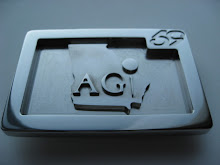

by: B. J. Hathaway, G.S.E.B. , M.C.I.
Medicus Certified Instructor
As golfers we are familiar with such terms as rhythm, timing and tempo but often times we are not exactly sure of their definitions. Let's get a feel for what rhythm really is and how it applies to the golf swing.
Rhythm (from Greek ῥυθμός - rhythmos, "any measured flow or movement, symmetry") is the variation of the length and accentuation of a series of sounds or other events.
As we see, it is measured, so there must be a count or beat. Listen to your heart beat and you will hear your own rhythm. When we are healthy it is constant, a dependable rhythm. Good golf has a rhythm too.
Poor rhythm is caused by quick, jerky motions at some point in the movement. Many players lose their timing in the transition phase of the swing; that terrible feeling of hitting from the top is just another name for lost rhythm. Quitting, or stopping at the ball is another cause of poor timing. One of the reasons I like students to use a heavy club such as the Medicus PowerMax is to give a feeling of constant motion without quitting with the thought of a smooth start-down and swinging into the finish position.
Rhythm is accomplished when the club and arms move at the same RPM. The angle formed between th club shaft and left forearm is the third power accumulator in The Golfing Machine and defines rhythm control when in its "in-line" condition. The pivot also must not interfere with the arms and hands but play a supporting role.
Ernie Els has a smooth rhythm while Nick Price is quite fast, but both have a rhythm that supports how they live, walk, talk and play.
The key is to find your rhythm and make sure your swing components help you achieve it more consistently!







No comments:
Post a Comment